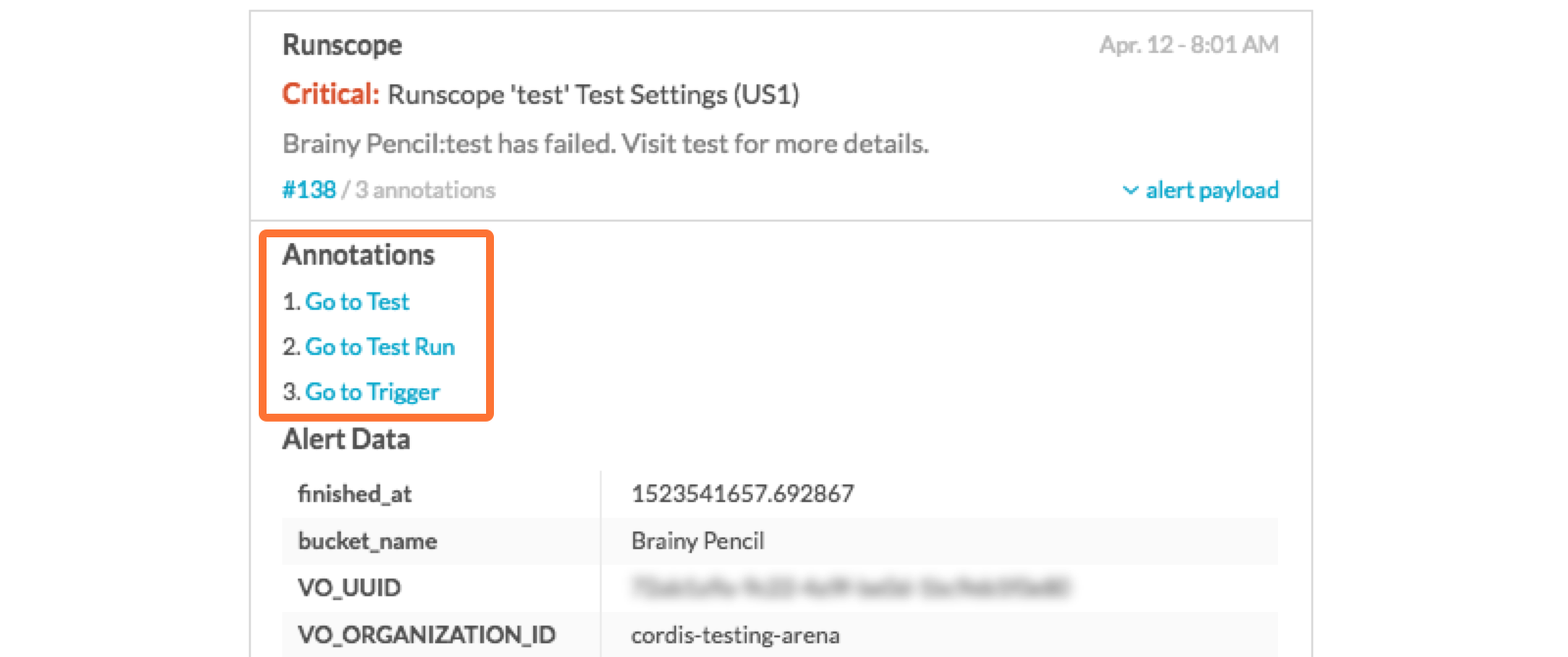Splunk On-CallのRunscopeインテグレーション 🔗
要件 🔗
このインテグレーションは以下のバージョンのSplunk On-Callと互換性があります:
はじめに、Essentials、またはフルスタック。アラート注釈を追加するには、フルスタックが必要です。
DataDogからインシデントに提供されるリンクに注釈を付けるには、ルールエンジン(Enterpriseのみの機能)を使用する必要があります。
Runscope を使用すると、APIの使用状況を記録、監視、測定し、APIの問題を迅速に解決することができます。以下のステップでは、インテグレーションプロセスを説明します。また、このインテグレーションに関するRunscopeのドキュメント こちら も参照してください。
In Splunk On-Call 🔗
Splunk On-Callで、Settings、Alert Behavior* の順に選択します。次に Integrations、Runscope の順に選択します。
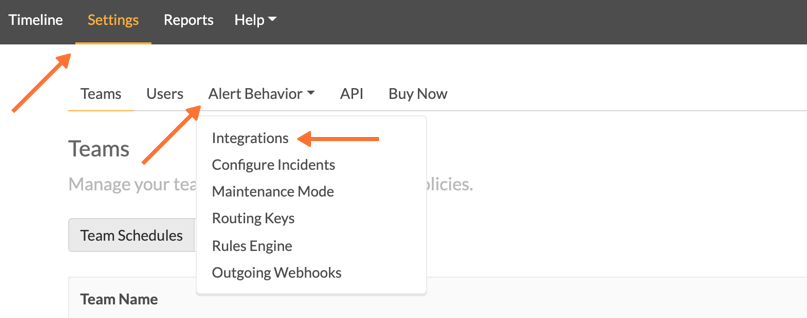
インテグレーションがまだ有効になっていない場合は、Enable Integration を選択して、以下のようにエンドポイントURLを生成します。このキーをクリップボードにコピーしてください。
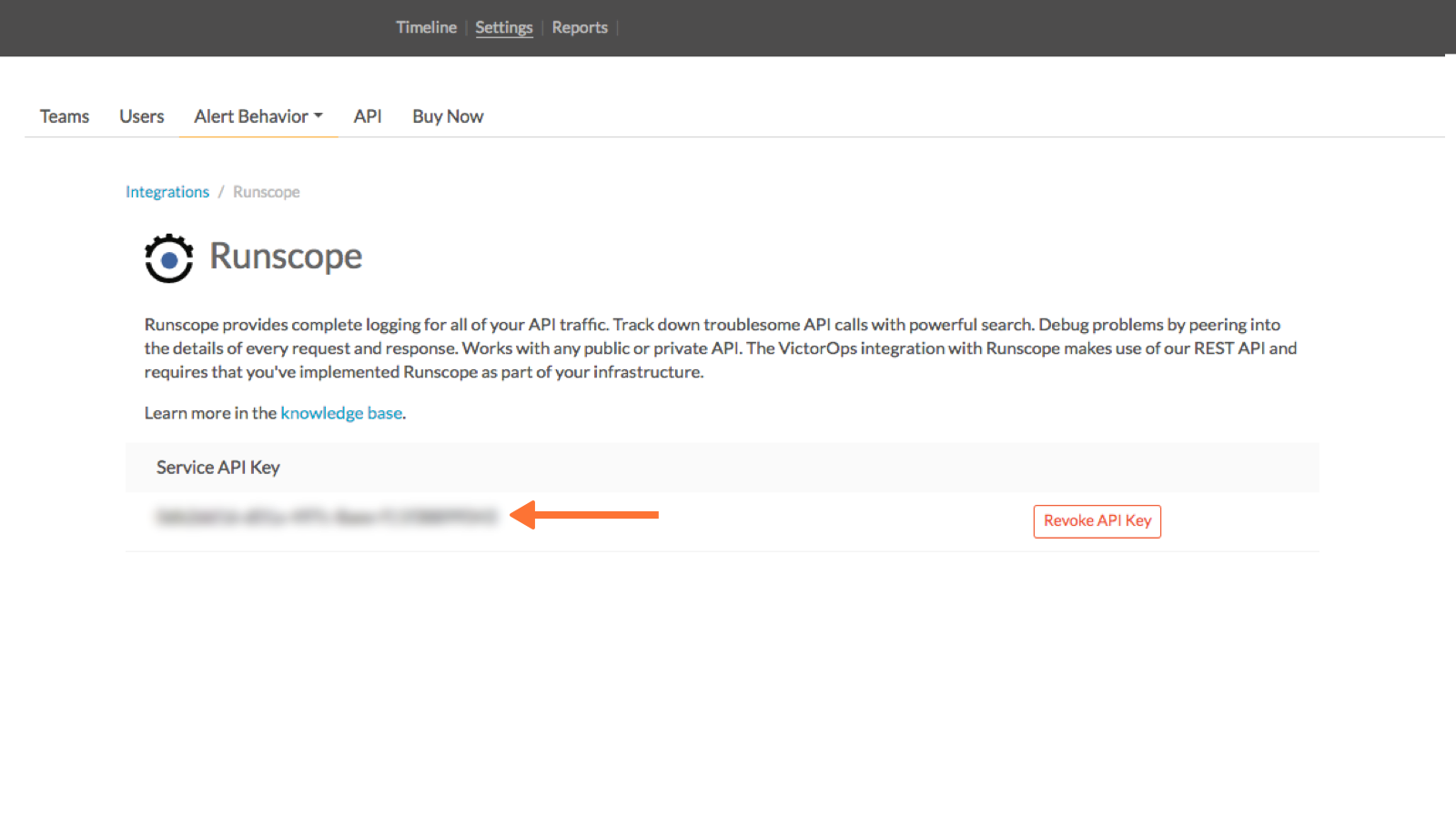
In Runscope 🔗
インターフェイス上部のタブからAPIテストを選択し、Splunk On-Callインテグレーションを追加するテストを選択します。以下の例では」test」を選択しています。
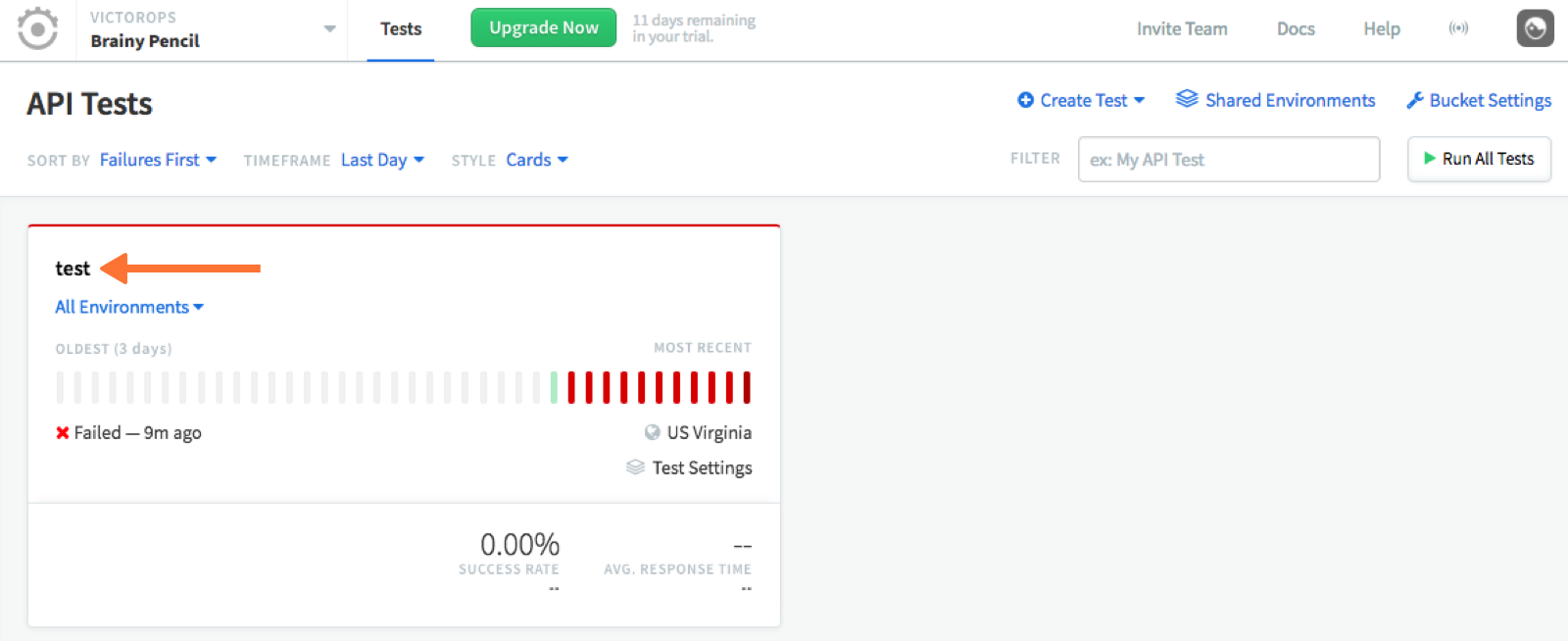
テスト内からサイドバーで Edit を選択し、Integrations に移動して、View All Services を選択します。
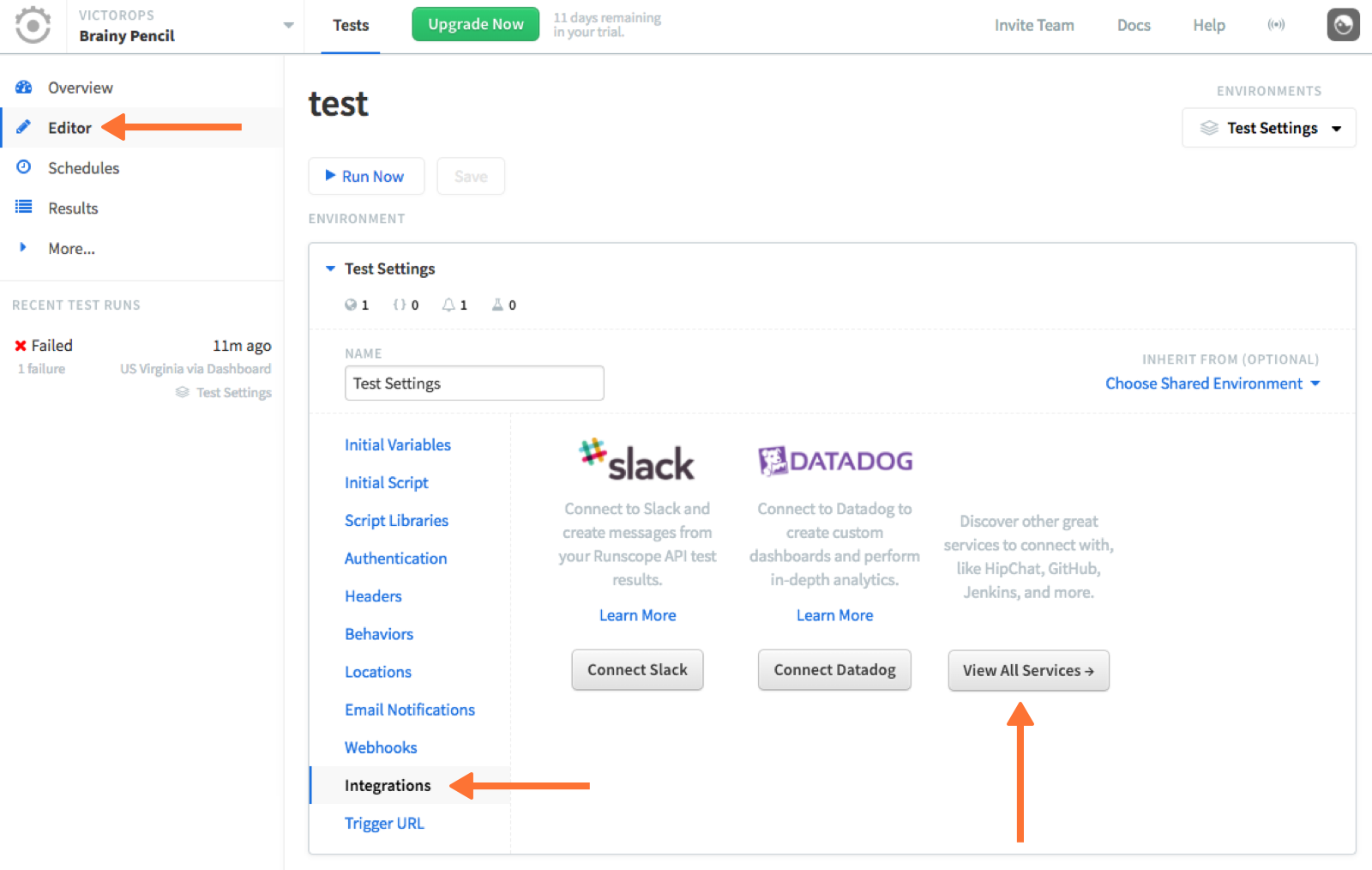
Splunk On-Call (旧VictorOps)インテグレーションを検索し、Connect VictorOps を選択します。
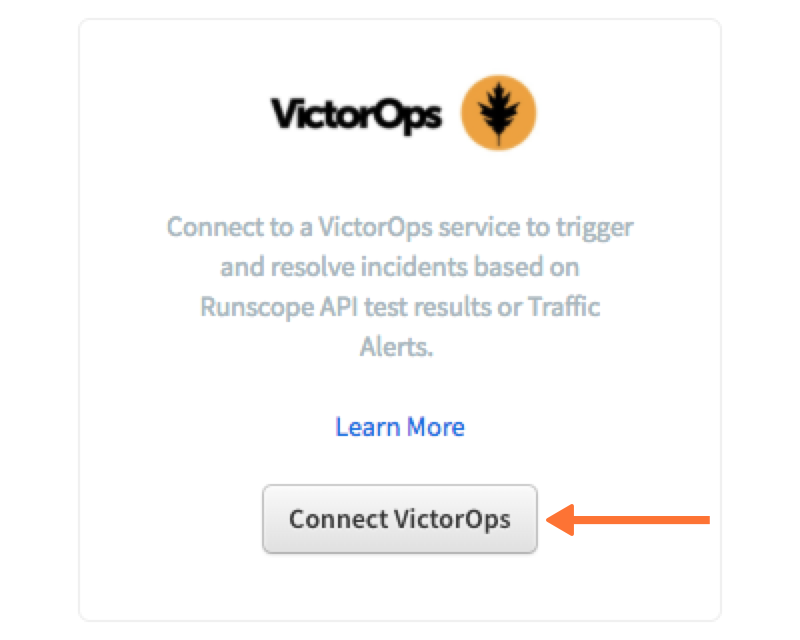
APIキーとルーティングキーを貼り付けます。Automatically resolve incidents when test passes を選択し、Notification Threshold を1に設定します。
設定を完了するには、Connect Account /を選択します
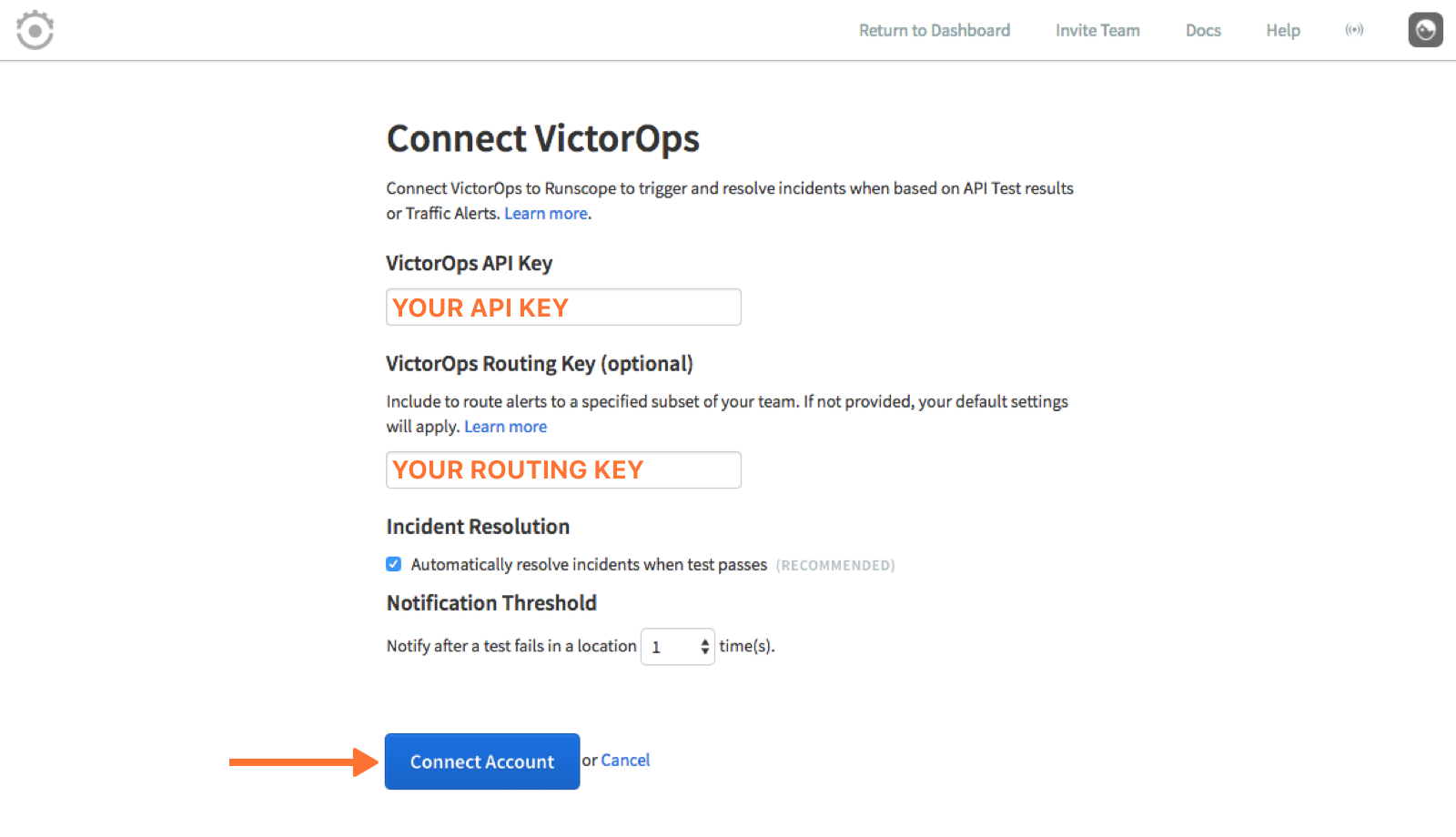
推奨されるルールエンジンのルール 🔗
注釈
この追加機能は、ルールエンジンを利用するため、フルスタックの機能が必要です。
ランスコープのアラートの詳細には、ページングされたユーザーを問題のテストに素早くリンクすることができるいくつかのURLがあります。これらのアラートは、注釈 として表示することで、すぐに利用できるようにすることができます。以下の警告ルールは、スクリーンショットに示す形式の警告を生成します。便宜上、以下の情報をコピー&ペーストすることができます。
When monitoring_tool ` matches Runscope`
アラートに次の注釈をつけます:
URL - Go to Test Run - ${{test_run_url}} URL - Go to Trigger - ${{trigger_url}}
URL - テストに移動 - ${{test_url}}
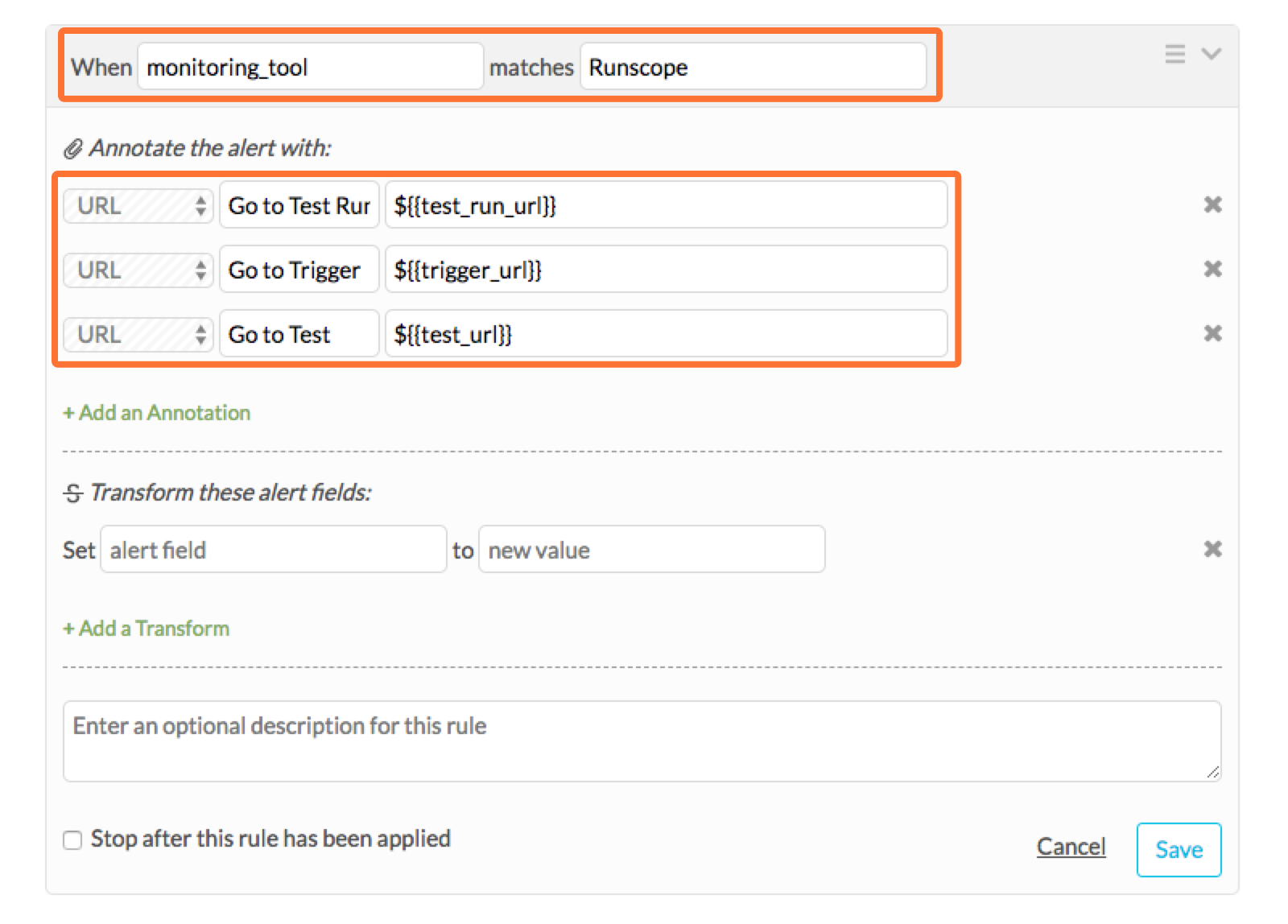
アラートは以下のように表示されます:
